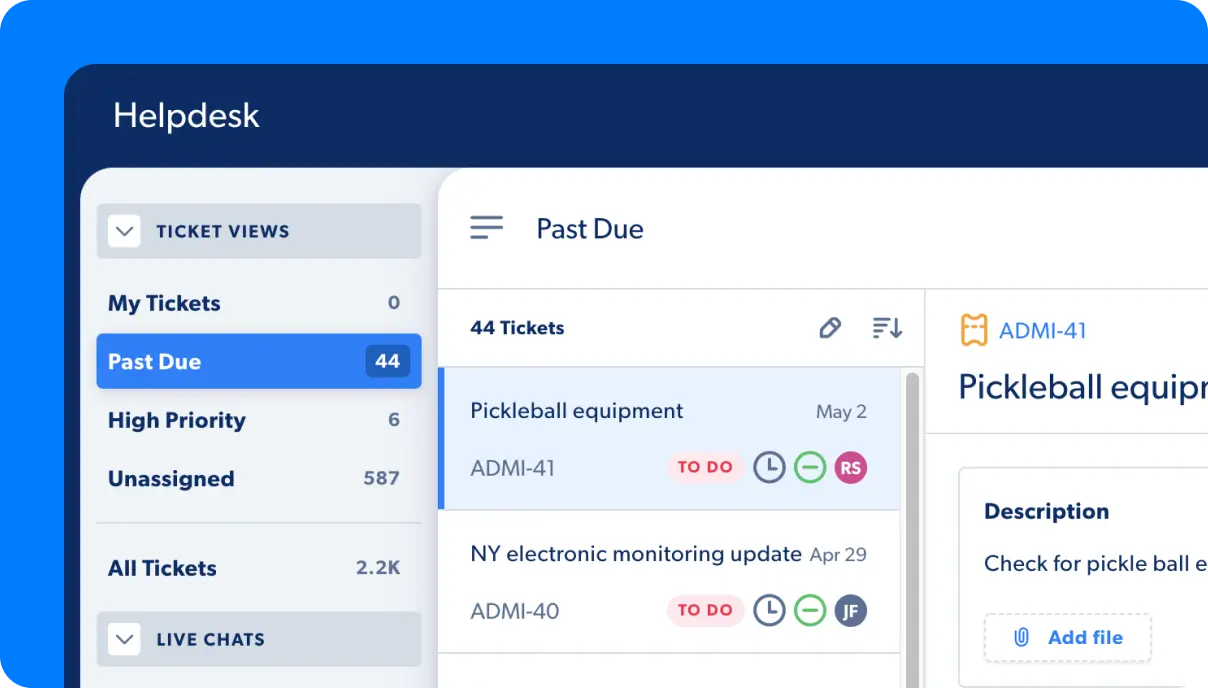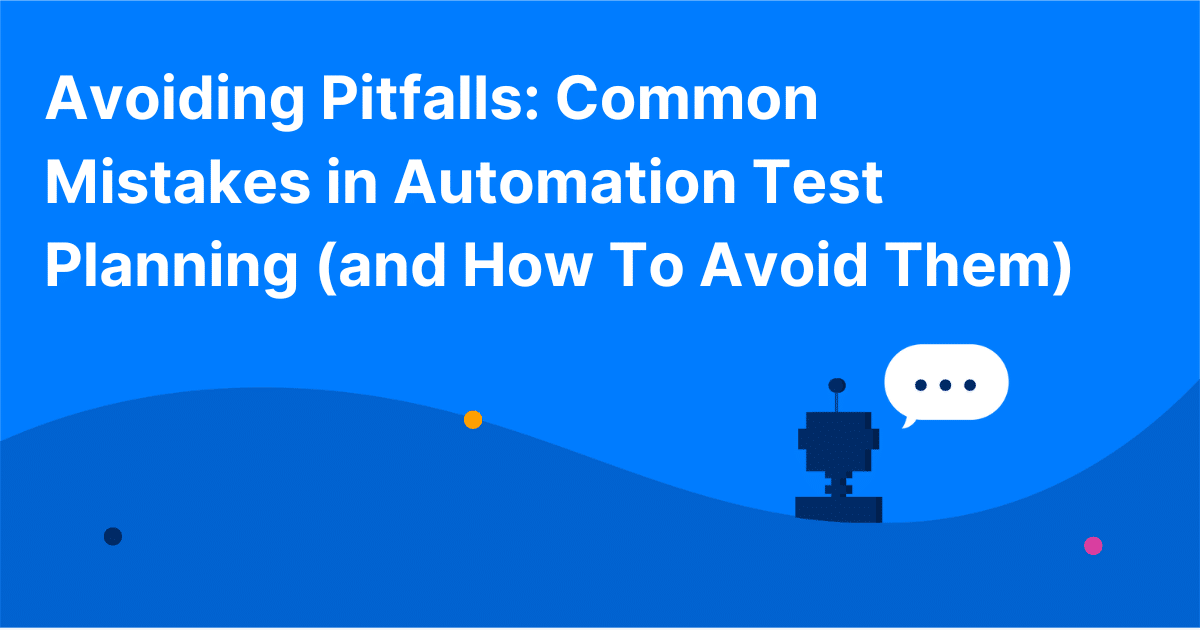The idea of automation test planning may seem daunting at first, but it doesn’t have to be! If you understand what to avoid when setting up and running your tests, the entire process will become much simpler. Not to mention, you’ll be way more successful. In this post, we’ll discuss common mistakes that lead to pitfalls in automation test planning. The goal is to help you, as an IT pro, use an automation test plan to ID potential issues early. That way, you can make sure your project plans are efficient and effective throughout their life cycles. We’ll dig into some best practices for developing comprehensive testing strategies with minimal risk of error-prone processes.
A few common mistakes to avoid when you’re creating an automation test plan

Lack of clear objectives & scope
When it comes to creating an automation test plan, there are a few common mistakes that you want to avoid. One of the most important things to keep in mind is the need to have clear objectives and a defined scope. If you don’t take the time to establish these key elements, you run the risk of falling into the trap of setting vague or unrealistic goals. This is where the concept of SMART objectives comes into play. By making sure that you have specific, measurable, achievable, relevant, and time-bound objectives, you can be sure that your testing will be focused and effective. Similarly, by clearly defining the scope of your testing, you can avoid any confusion or miscommunications that can lead to wasted time and resources. Overall, taking the time to consider these key factors will help you to create an automation test plan that is efficient and effective.
Insufficient test coverage
In the world of software testing, a common pitfall is to focus too narrowly on a limited set of test scenarios. As tempting as it may be to test a handful of key features and call it a day, overlooking other aspects of the software can lead to major problems down the line. To prevent this mistake, experts recommend prioritizing test cases, leveraging risk-based testing, and using tools like code coverage to ensure that all bases are covered. Additionally, creating a comprehensive automation test plan can help teams catch issues early, reduce the risk of errors, and ensure that the software runs smoothly for users. By taking a broad and strategic approach to testing, developers can avoid costly mistakes and deliver a better product overall.
Neglecting a test environment setup
One of the most common mistakes in testing is insufficient attention paid to the setup of the test environment. This can easily lead to inaccurate results and wasted time. However, by following a few prevention strategies, such as replicating production-like environments, automating the environment setup process, and consistently maintaining the environment, teams can avoid this issue altogether. By incorporating these strategies into an automation test plan, businesses can increase the accuracy and efficiency of their testing process. It’s crucial to invest time in setting up the environment correctly, which will ultimately save time and resources in the long run.
Inadequate test data management
Creating a well-structured automation test plan is a critical part of software development. However, even the most carefully crafted test plan can fall flat if the data it’s using isn’t sufficient or inconsistent. It’s a common mistake that can cause serious issues and delays in the development process. To avoid this pitfall, consider prevention strategies such as generating realistic test data, utilizing data provisioning tools, and ensuring data privacy and security. These steps will not only enhance the effectiveness of your automation test plan but also ensure that your software is reliable and secure when it’s released to the public.
Poor test script design & maintenance
In the age of automation, having a solid automation test plan is crucial for any software development project. However, a common mistake that many teams make is creating overly complex or brittle test scripts. These types of scripts can be difficult to manage and maintain and can even cause more problems than they solve. To avoid this issue, it’s important to follow best practices for test script design, such as using modular and reusable components and implementing version control. By taking these steps, teams can ensure that their automation test plans are effective, efficient, and reliable.
Ineffective error handling & reporting
When developing an automation test plan, it is crucial to consider potential errors and insufficient reporting. Neglecting to handle these issues can lead to wasted time and resources in the long run. By implementing robust error-handling mechanisms, capturing relevant information, and generating comprehensive test reports, you can ensure that your automation test plan is effective and efficient. These prevention strategies ensure that all errors are caught and properly addressed, saving you and your team valuable time. Taking the extra steps to thoroughly handle errors and report shortcomings can ultimately lead to a more successful automation test plan.
Lack of collaboration & communication
Automation test planning is essential for efficient software development, but it’s easy to make mistakes that can lead to failed testing efforts. One common mistake is not involving stakeholders and teams enough. To avoid this error, it’s important to engage stakeholders, foster cross-functional collaboration, and use collaboration tools. These strategies ensure everyone’s input is considered and teams are on the same page when conducting tests. When working on an automation test plan, it’s crucial to build a collaborative environment where everyone feels involved and invested. By doing so, you’ll empower your team to create an effective testing process that ensures your software functions as intended, and that your customers have a seamless experience.
Not enough training or skill development
When it comes to crafting an automation test plan, there are a lot of details to keep in mind. Unfortunately, one of the most common mistakes that testing teams make is neglecting to invest in training and skill enhancement. It’s easy to get caught up in the day-to-day tasks of testing and let professional development fall by the wayside. However, failing to regularly update your team’s knowledge and expertise can quickly lead to inadequate test plans and missed bugs. To prevent this from happening, it’s crucial to provide training opportunities, encourage knowledge sharing, and stay updated with industry trends. By prioritizing ongoing skill development, your team can create more effective test plans and deliver higher-quality software.

The benefits of automated test plans are significant, and so is understanding what to avoid when doing so. If you want to maximize your workflow efficiency, be aware of the common mistakes that come with automation test planning.

Automate Your Work
Capacity’s enterprise AI chatbot can help:
- Answer FAQs anytime, anywhere
- Find relevant documents within seconds
- Give surveys and collect feedback














































